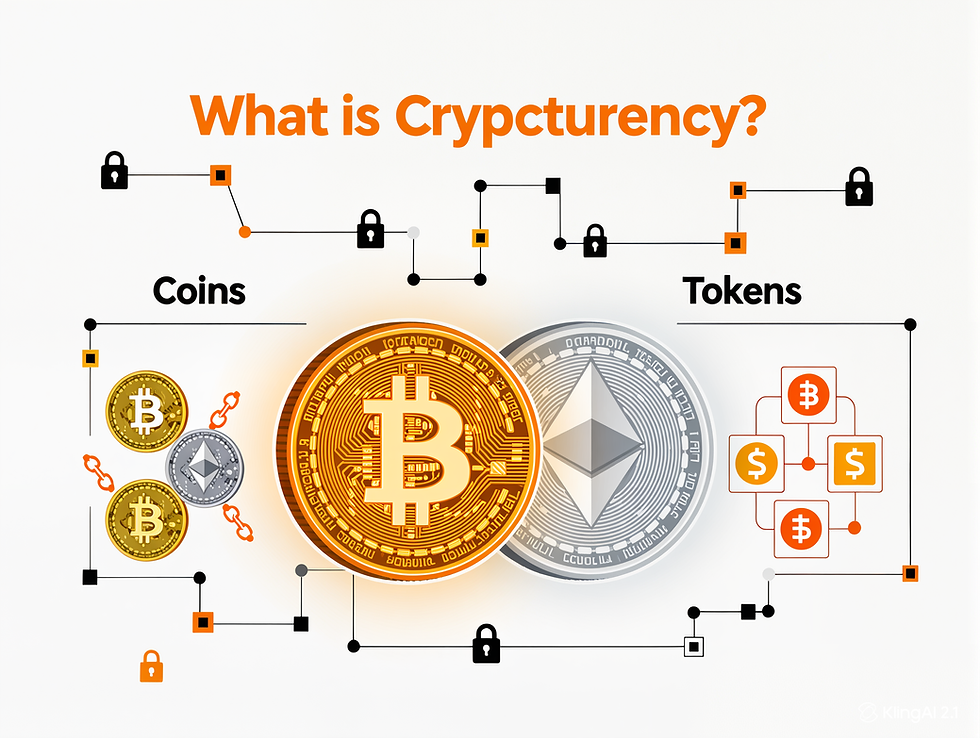What is Blockchain Technology? Understanding Blockchain for Beginners
- rachelbeautybar

- Aug 2
- 3 min read
If you’ve ever wondered What is Blockchain Technology?, you are not alone. Blockchain is one of the most revolutionary innovations in the digital era, powering cryptocurrencies, decentralized applications, and new financial systems. This guide will help beginners understand what blockchain is, how it works, its key features, and its real-world applications.
What is Blockchain Technology?

What is Blockchain Technology? Blockchain is a decentralized distributed ledger system designed to record and store digital asset data in a secure, transparent, and immutable way.
A blockchain consists of blocks that are cryptographically linked to each other in chronological order to form a chain. This structure ensures that once data is written, it cannot be altered without affecting the entire chain.
Blockchain is often referred to as Distributed Ledger Technology (DLT) because it eliminates the need for a central authority or intermediary.
When Did Blockchain Begin?
The concept of blockchain dates back to the early 1990s, introduced by researchers Stuart Haber and W. Scott Stornetta.
However, blockchain gained global recognition in 2008 when Satoshi Nakamoto published the Bitcoin whitepaper, outlining a peer-to-peer electronic cash system that solved the double-spending problem without needing a trusted third party.
On January 3, 2009, the first Bitcoin block, known as the Genesis Block, was mined, officially bringing blockchain into the real world.
How Blockchain Works

Blockchain records transactions through a series of steps:
A user requests a transaction, which is broadcast to the network.
Nodes (computers) validate the transaction based on consensus rules.
Once validated, the transaction is added to a new block.
The new block is cryptographically linked to the previous one, creating a secure, chronological chain.
Because every block contains the hash of the previous block, altering any piece of data would require changing every subsequent block, making tampering practically impossible.
Core Features of Blockchain Technology

Decentralization
No single entity controls the network. Instead, blockchain relies on distributed nodes worldwide, ensuring that no central authority can manipulate the data.
Transparency
Every transaction is recorded on a public ledger, allowing anyone to verify and audit the data.
Immutability
Once data is written to a blockchain, it cannot be changed or deleted, ensuring trust and data integrity.
Security
Blockchain uses cryptographic hashing to secure data. Any attempt to alter a block would break the chain’s hash integrity, making attacks extremely difficult.
Trustless System
Blockchain removes the need for participants to trust each other. The network operates on consensus rules and cryptographic proof rather than human trust.
Distributed Network
Data is stored across multiple nodes globally, making the system highly resilient against failures or attacks.
Consensus Mechanisms in Blockchain

Consensus mechanisms are protocols that ensure all nodes agree on the validity of transactions. Some of the most common include:
Proof of Work (PoW): Miners use computational power to solve cryptographic puzzles. Example: Bitcoin.
Proof of Stake (PoS): Validators stake tokens to secure the network and create new blocks. Example: Ethereum 2.0.
Delegated Proof of Stake (DPoS): Token holders vote for validators. Example: Tron, EOS.
Proof of Authority (PoA): Relies on validator reputation rather than token holdings. Example: VeChain.
Evolution of Blockchain Technology
Blockchain has developed through several key stages:
Blockchain 1.0 – Digital Currency: Focused on decentralized money like Bitcoin.
Blockchain 2.0 – Smart Contracts: Introduced programmable transactions, with Ethereum as the leading platform.
Blockchain 3.0 – Decentralized Applications (dApps): Enabled distributed apps beyond finance.
Blockchain 4.0 – Industry Integration: Applies blockchain to supply chain, identity, and enterprise use cases.
Applications of Blockchain Technology

Cryptocurrency: The most popular use case, enabling secure, transparent, and borderless payments.
Smart Contracts: Self-executing agreements that reduce fraud and automate processes.
Supply Chain Management: Enhances traceability and transparency in logistics.
Digital Identity: Creates secure, tamper-proof identity systems for individuals and organizations.
Real Estate: Streamlines property transactions and reduces paperwork.
Intellectual Property: Protects ownership rights and ensures data integrity.
Banking and Finance: Reduces costs, increases transaction speed, and improves security.
Blockchain in Numbers
There are over 52 million active blockchain wallets worldwide.
Global blockchain market size is projected to reach $212 billion by 2030, growing at over 70% CAGR.
More than 860 million people use blockchain-powered applications, including crypto, NFTs, and Web3 platforms.
Bitcoin’s blockchain remains the largest, securing over $2.2 trillion in market value.
Conclusion
So, What is Blockchain Technology? It’s a decentralized, transparent, and immutable digital ledger that is transforming industries worldwide.
For beginners, understanding What is Blockchain Technology? is essential to exploring cryptocurrencies, decentralized finance, and Web3 applications. Blockchain is not just about money; it’s about building a new digital economy based on trustless, secure, and transparent systems.
Register by the links below to get cashback fees up to 70%:



Comments